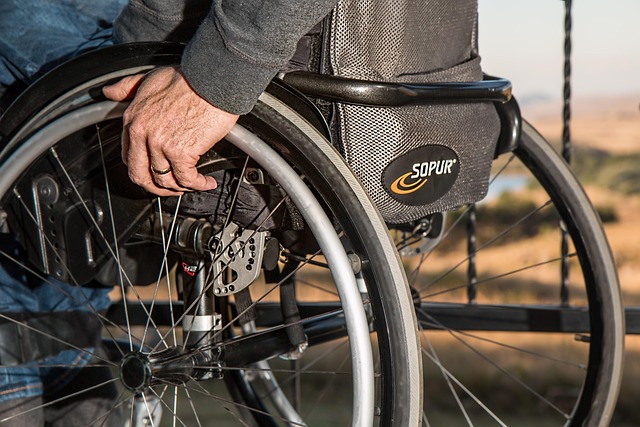Cold plunges (cold showers/ice baths) stimulate immune systems by increasing circulation, enhancing white blood cell movement, reducing inflammation, and supporting norepinephrine production. Gradual adaptation is crucial for safety. Start with short, daily cold showers to build tolerance. Consult a healthcare provider before trying cold therapy if you have chronic conditions, are pregnant, have low blood pressure, or are recovering from serious illness.
“Unleash your body’s natural defense mechanism with the power of cold therapy! Discover how safe practices involving cold plunges can significantly boosting immunity with cold therapy. This comprehensive guide explores the science behind this ancient technique, offering insights on preparing for and maximizing the benefits. From understanding the effects on your immune system to identifying when to avoid these practices, you’ll learn essential safety measures. Embrace a healthier you through informed integration of cold therapy into your wellness routine.”
Understanding Cold Plunges and Their Benefits for Immunity
Cold plunges, also known as cold showers or ice baths, have gained popularity in recent years for their potential health benefits, especially in supporting a robust immune system. This simple practice involves briefly exposing yourself to extremely cold water, typically by immersing your body in an icy shower or sitting in an ice bath. It might sound extreme, but the shock of cold temperature triggers a series of physiological responses that can have significant advantages for your immune health.
One of the key benefits is its ability to stimulate blood circulation. When you immerse yourself in cold water, your blood vessels constrict, followed by rapid vasodilation as your body tries to warm up. This process increases blood flow and helps flush out toxins from your system. By promoting a robust circulatory response, cold plunges support the immune system’s efficiency, enabling it to detect and fight off pathogens more effectively. Additionally, they can reduce inflammation, boost metabolism, and enhance mental clarity, all of which contribute to a healthier, stronger immune response.
Preparing for a Cold Shower: Safety Measures and Precautions
Preparing for a cold shower involves more than just turning on the tap. To maximize the benefits of cold therapy while ensuring safety, it’s crucial to take certain precautions. First, check the water temperature with your elbow or a thermometer to avoid burns, as even a slight warmth can diminish the immune-boosting effects. Second, start slowly—a quick splash may be jarring for those new to cold plunges. Gradually increase exposure to cool water over time to acclimate your body.
Wear appropriate clothing to insulate against sudden temperature changes and protect vulnerable areas like extremities. After the plunge, dry off promptly to prevent chill and ensure your comfort. Remember, proper preparation and gradual adaptation are key to safely embracing cold therapy as a means of boosting immunity.
Integrating Cold Therapy into Your Routine for Optimal Immune Support
Integrating cold therapy into your daily routine can be a powerful way to boosting immunity with cold therapy. Short, intense cold plunges, such as ice baths or cold showers, have been shown to stimulate various aspects of the immune system. When you expose your body to extreme cold, it triggers a series of physiological responses that enhance your natural defenses. For instance, cold therapy can increase circulation, promoting the rapid movement of white blood cells – key players in fighting off infections – throughout your body.
Regular practice may also reduce inflammation and support the production of norepinephrine, a hormone that boosts alertness and helps coordinate the immune response. Incorporating these practices into your self-care routine is accessible and can provide significant benefits for maintaining optimal immune health. Start with small steps, like incorporating cold showers or ice baths for a few minutes each day, and gradually build up your tolerance as you become more accustomed to the practice.
Potential Risks and When to Avoid Cold Plunges
While cold plunges, such as ice baths or cold showers, have gained popularity for their potential benefits in boosting immunity with cold therapy, it’s essential to be aware of potential risks. These practices can induce a stress response in the body, which may offer temporary boosts in immune function and reduce inflammation. However, they are not suitable for everyone.
There are certain situations when individuals should avoid cold plunges. People with chronic health conditions like heart disease, low blood pressure, or Raynaud’s disease should consult their healthcare provider before trying cold therapy as it can potentially exacerbate these issues. Pregnant women, children, and those recovering from severe illness or injury are also advised against using cold plunges until medical advice is sought. Additionally, individuals who experience severe chills, pain, or discomfort during or after a cold plunge should stop immediately and seek professional help.
Cold plunging offers a powerful, natural way to boost immunity with cold therapy when practiced safely. By understanding the benefits, preparing adequately, and integrating this practice into your routine responsibly, you can harness the potential of cold water to support your body’s defense mechanisms. However, it’s crucial to recognize potential risks and know when to avoid cold plunges. Always listen to your body and consult a healthcare professional for personalized advice, ensuring a safe and effective journey towards enhanced immune health.
